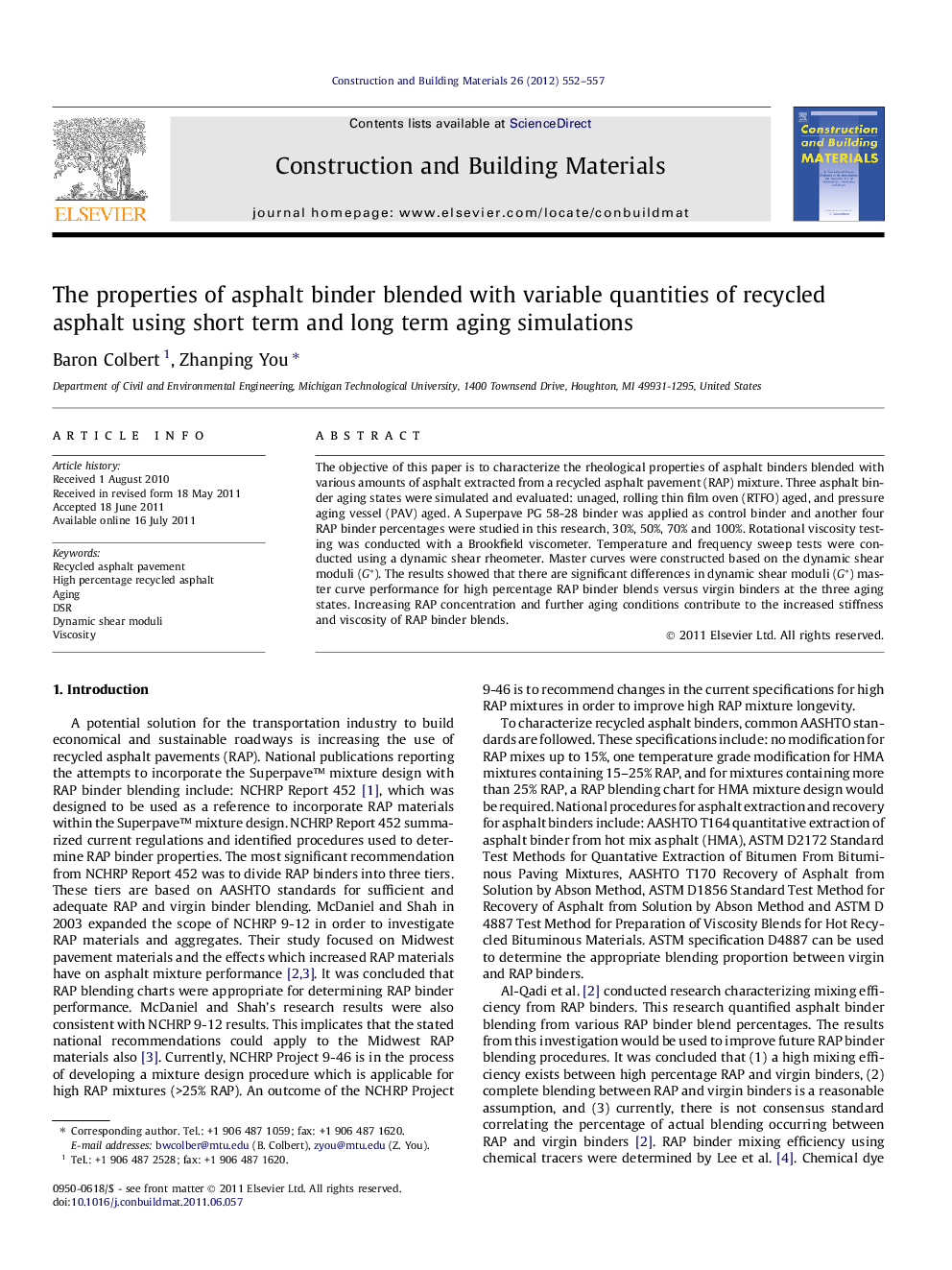| Article ID | Journal | Published Year | Pages | File Type |
|---|---|---|---|---|
| 259188 | Construction and Building Materials | 2012 | 6 Pages |
The objective of this paper is to characterize the rheological properties of asphalt binders blended with various amounts of asphalt extracted from a recycled asphalt pavement (RAP) mixture. Three asphalt binder aging states were simulated and evaluated: unaged, rolling thin film oven (RTFO) aged, and pressure aging vessel (PAV) aged. A Superpave PG 58-28 binder was applied as control binder and another four RAP binder percentages were studied in this research, 30%, 50%, 70% and 100%. Rotational viscosity testing was conducted with a Brookfield viscometer. Temperature and frequency sweep tests were conducted using a dynamic shear rheometer. Master curves were constructed based on the dynamic shear moduli (G∗). The results showed that there are significant differences in dynamic shear moduli (G∗) master curve performance for high percentage RAP binder blends versus virgin binders at the three aging states. Increasing RAP concentration and further aging conditions contribute to the increased stiffness and viscosity of RAP binder blends.
► Asphalt binders blended with reclaimed asphalt (RAP) binders were investigated. ► The changes in viscosity and complex modulus were measured. ► Viscosity of the blended binders, increases with greater RAP binder percentages. ► Both simulated aging and increased RAP raise asphalt binder complex modulus.
